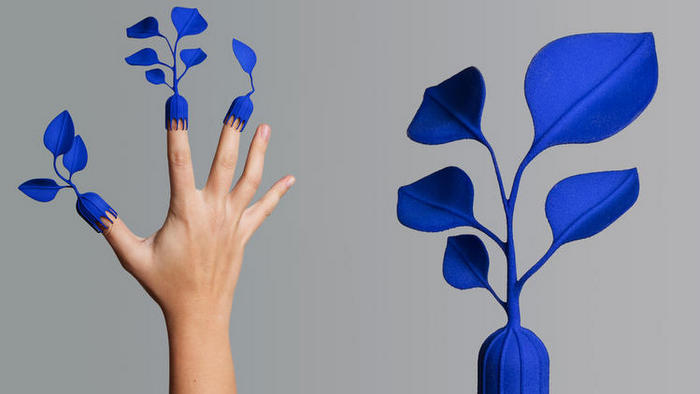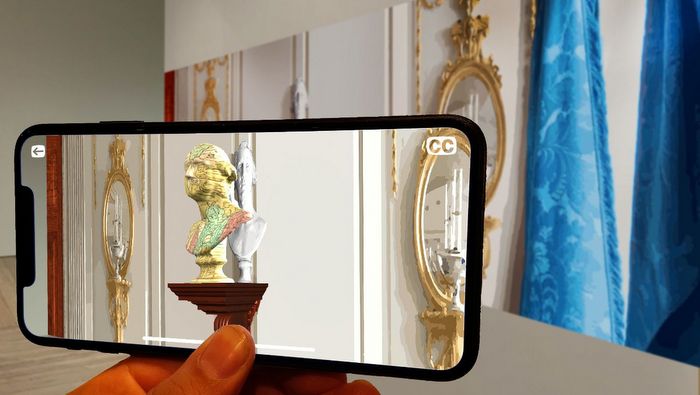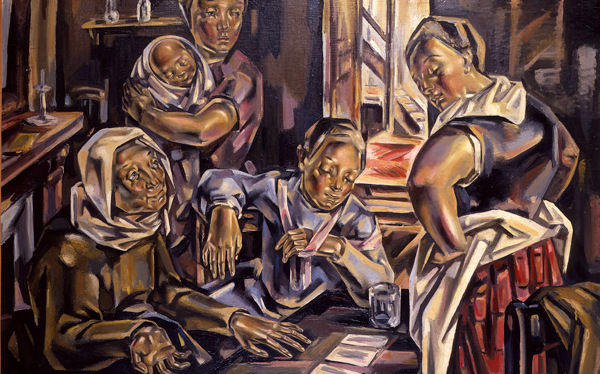Alan Michelson: Wolf Nation presents four works in video, sound, print, and augmented reality that invoke place from an Indigenous perspective. The artist—who is Kanyen'keha:ka (Mohawk), a member of one of the six nations of the Haudenosaunee (Iroquois) Confederacy—traverses local landscapes and temporalities in his art, treating geographical sites as archives and exploring territory typically bypassed in American history and largely absent from American memory. Wolf Nation, organized by Chrissie Iles, Anne and Joel Ehrenkranz Curator, with Clémence White, curatorial assistant, will be on view in the Museum's fifth floor Kaufman and Goergen Galleries and in the lobby from October 25, 2019 through January 12, 2020.
Scott Rothkopf, Senior Deputy Director and Nancy and Steve Crown Family Chief Curator, remarked, "Alan Michelson's influential practice has critically and poetically foregrounded Indigenous perspectives to reorient how all of us can see history and place. The Whitney is thrilled to present this beautiful and haunting show, and we remain committed to expanding our work with Indigenous artists in both our collection and exhibition and public programs."
The centerpiece of the exhibition is Wolf Nation (2018), an immersive video installation recently acquired for the Whitney's permanent collection. Originally commissioned by Storm King Art Center, Wolf Nation transforms webcam footage of red wolves, a critically endangered indigenous species, into a poignant meditation on displacement. The work links their possible eradication with that of their namesake, the Wolf Tribe of the Lenape, also known as the Munsees, whose homelands encompassed present southern New York and northern New Jersey. Michelson translates the format and color of wampum belts—horizontal purple and white beadwork sashes used in Indigenous diplomacy whose symbolic designs encoded solemn messages—into panoramic video and sound. Wolf Nation is both an evocative affirmation of solidarity across species and a stark appeal to the forces responsible for their persecution.
Michelson commented, "American landscape is complicated when you're Indigenous. For example, this year is the 240th anniversary of the Sullivan-Clinton Expedition, George Washington's brutal invasion and destruction of Iroquoia, the Haudenosaunee homelands which now comprise most of New York state. Sixty of our towns, and hundreds of our houses, farms, crops, orchards, and livestock were burned and pillaged in a scorched-earth campaign that forced our people from their lands as homeless refugees. This is only one of the tragic but unacknowledged legacies that underpin our contemporary landscape. That history needs to be confronted."
Also included in the exhibition is Shattemuc (2009), a video installation made for the Henry Hudson Quadricentennial, which retraces part of Hudson's historic voyage on the river once known as "Shattemuc" to the region's Indigenous inhabitants. Captured at night in the searchlight beam of a moving boat, the illuminated shoreline progresses from wooded palisade to industrial quarry, riverside town, power plant, and marina, encapsulating the development that followed upon Hudson's journey. In Shattemuc, as throughout his oeuvre, Michelson appropriates and redirects colonial technologies of mapping and surveillance as well as landscape painting, the moving panorama of the nineteenth century, and other forms.
The soundtracks for Wolf Nation and Shattemuc are composed by White Mountain Apache composer and musician Laura Ortman, whose work was included in the 2019 Whitney Biennial.
Premiering are two new augmented reality works that Michelson produced with artist Steven Fragale, accessed through an interactive app that visitors are invited to download on their devices. Town Destroyer (2019) is an eighteen-foot-long wallpaper mural based on the interior of the mansion at Mount Vernon, George Washington's historic estate in Virginia, and executed in the style of scenic wallpapers of the period. Inserted into the scene is a bust of Washington that, when viewed through the app, becomes three-dimensional on the screen. Moving images on the virtual bust's surface and spatial audio tell the story of the brutal Sullivan-Clinton Campaign of 1779, the Washington-ordered invasion and destruction of Iroquoia, the Haudenosaunee homelands that now constitute the bulk of present New York state.
Sapponckanikan (Tobacco Field), 2019, created for the Museum's lobby, responds to the history of the Whitney's neighborhood, formerly a Lenape village and tobacco field of the same name. When activated by the visitor through an app downloaded to their phone, a large circle of tobacco plants of the variety used ceremonially across Turtle Island (North America) will appear on the phone screen. Rustling gently in a virtual wind, the plants, based on those in the artist's sister's garden at Six Nations Reserve, create a duality of time and place and speak to Indigenous survivance—active presence and resistance—over four difficult centuries.
Iles noted, "For Alan Michelson, the moving image operates as a form of witnessing. Wolf Nation resurfaces invisible histories of place—the forest, the river, the field, and the land—and translates them into visual imagery that asserts the Indigenous voice. Distilled from diverse sources, each work is horizontal or circular in form, echoing Indigenous concepts of time and space—multi-perspectival and cyclical, rather than monocular and linear. By creating works that evoke place and historical memory, Michelson allows his viewers to see Indigeneity—and Native cultures—as visceral, and lived."
ABOUT THE ARTIST
Alan Michelson (Mohawk, b. 1953) is an internationally recognized New York-based artist, curator, writer, lecturer, and member of one of the six nations of the Haudenosaunee (Iroquois) Confederacy. For over thirty years, working across a diverse range of media and combining meticulous research with a site-based practice grounded in local context, he has critically and poetically uncovered troubling colonial legacies and challenged national myths.
Theatrum Orbis Terrarum, Michelson's four-channel video installation, was recently featured in the 2019 Venice Biennale, and has also been shown in the eighteenth Sydney Biennale and the fifth Moscow Biennale. His work is in the permanent collections of the Whitney, National Gallery of Canada, and the Smithsonian National Museum of the American Indian. His practice includes public art, and Mantle (2018), his permanent public monument honoring Virginia's Indian nations installed at the capitol in Richmond, Virginia, was recognized in the prestigious 2019 Public Art Network Year in Review. The feature article "In the Studio: Alan Michelson" appeared in the December 2018 issue of Art in America. Michelson is co-founder and co-curator, in conjunction with the Vera List Center for Art and Politics at The New School, of the groundbreaking Indigenous New York series.
CURATORIAL CREDIT
This exhibition is organized by Chrissie Iles, Anne and Joel Ehrenkranz Curator, with Clémence White, curatorial assistant.
ALAN MICHELSON: WOLF NATION TO OPEN AT THE WHITNEY ON OCTOBER 25
Related Publications

CID Grand Hornu: Super Power Design
April 25, 2024













